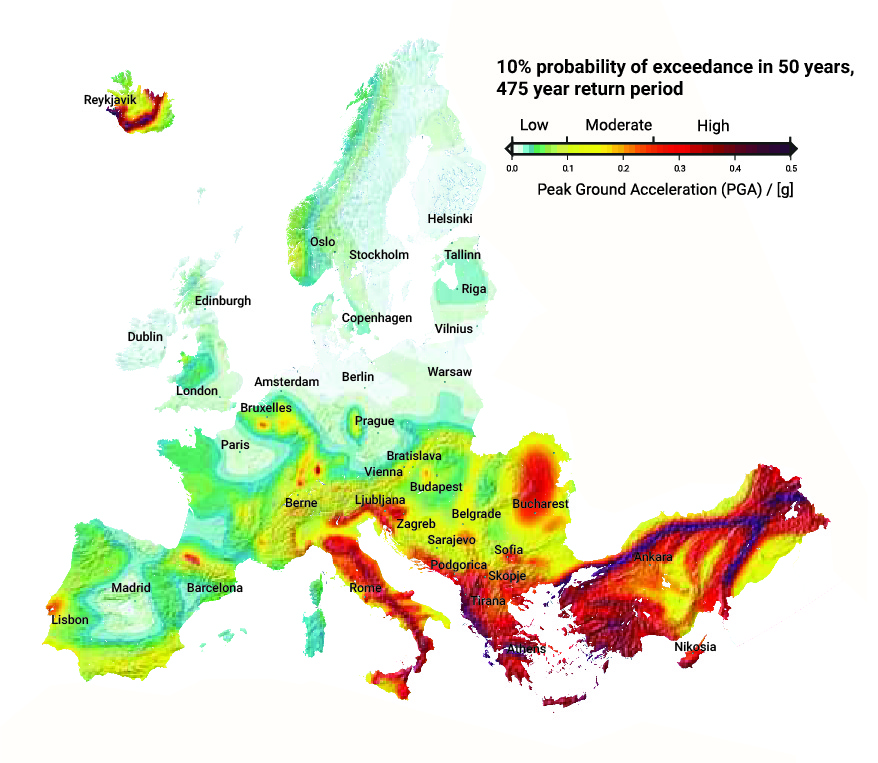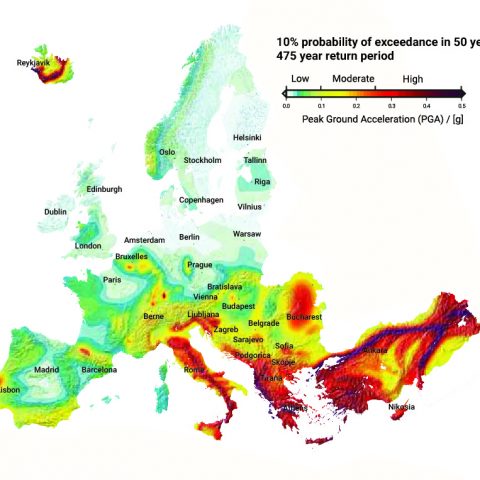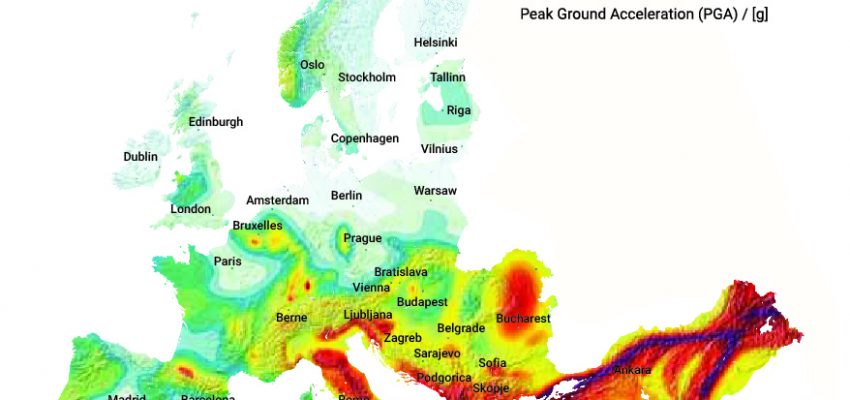The international building codes (the IBC, the EUROCODES, the Italian NTC, etc.) require that a building’s structural and non-structural elements be protected in zones that the local authorities map in their seismic zonation. The bracing requirements of each component are defined by the hazard to human life that the failure of this component would induce, by the building’s occupancy category, its content, soil and overall characteristics. For instance, bracing requirements of electrical components will be highest in hospitals, data centers and public buildings that must operate after an earthquake. There are three key areas to consider regarding seismic bracing in Europe and around the world.
Building Risk Category
The requirements for seismic protection depends on the building risk category or risk classification, as well as the seismic zone in which the building is located. The higher seismicity of the location and greater the building occupancy, the more stringent the requirements. A military or healthcare facility in a generally seismically calm area will typically require bracing because of the building’s importance.
Seismicity of the Location
Seismicity of a location should be considered when a building is being designed. This is impacted by several factors like the epicenter of an earthquake, the depth and magnitude, and the type of fault movement that can determine how widespread the impact is. Although geographic regions may recover from a major seismic event, an estimated 15 percent of business is lost forever due to an inability to relocate, renovate or divert shipping needs. Thus, preventative measures like seismic bracing, are essential in seismically active regions and in sensitive structures.

Many countries have developed seismic zonation maps. If the structure is in a zone classified as having some level of seismicity, which is the case of most areas, considerations must be given for seismic bracing.
Components of a Quality Seismic Protection System
Swaying and colliding generally causes damage to nonstructural components. For example, if one service is braced properly, it can still be damaged by unbraced services nearby. Proper bracing does not prevent components from moving but ensures the structure and everything inside it move in unison. When the building is impacted by the earthquake and nonstructural components move, damage can be catastrophic. Therefore, hanging services like pipe, conduit, duct and cable tray must be braced. Similarly, large units on the ground like panel boards, power generators, air conditioners, furnaces and pumps need to be anchored to prevent tipping or sliding.
When it comes to quality seismic protection systems, several potential hazards should be accounted for, but necessary components can be simplified into seven considerations. Those are:
- Brace anything that can sway or collide
- Anchor anything that can slide or tip over
- Allow for flexibility where differential movement is expected (i.e., with flexible pipe couplings)
- Leave appropriate clearance around each system
- Engineer the load path design
- Test the product for the application
- Inspect the installation
The last two points are particularly important because codes and standards are not always understood or accurately communicated. Some products may be marketed for a specific installation for which they are not actually tested.
While unique situations may require additional components, these seven points are good rules of thumb when considering a project’s seismic protection needs.


